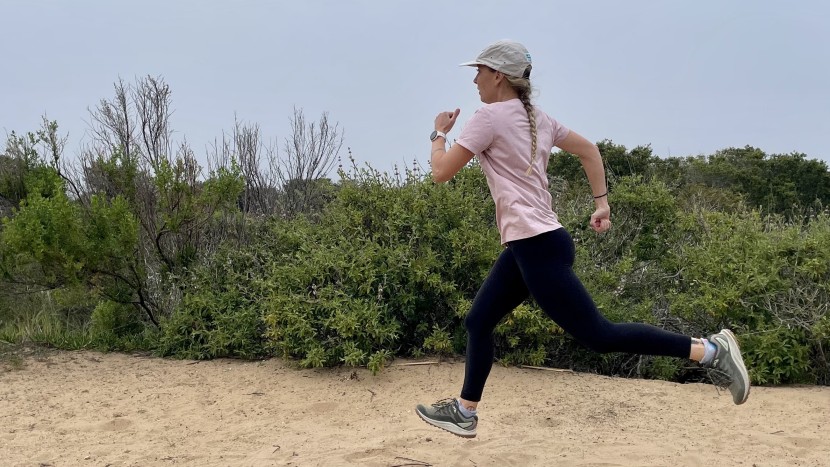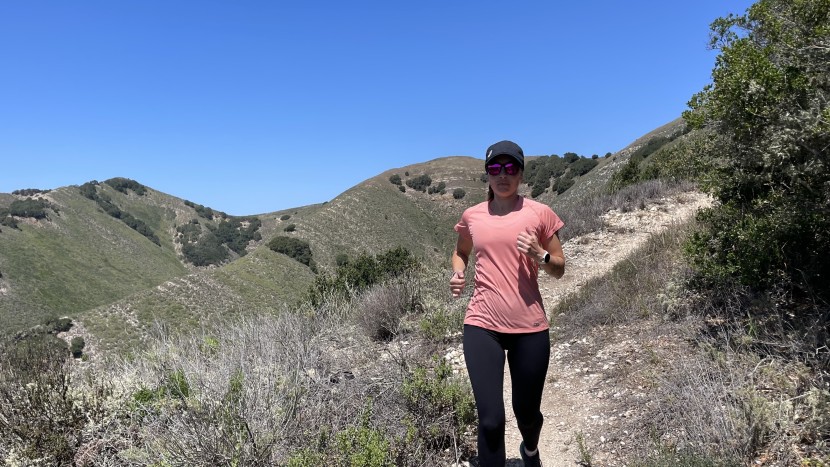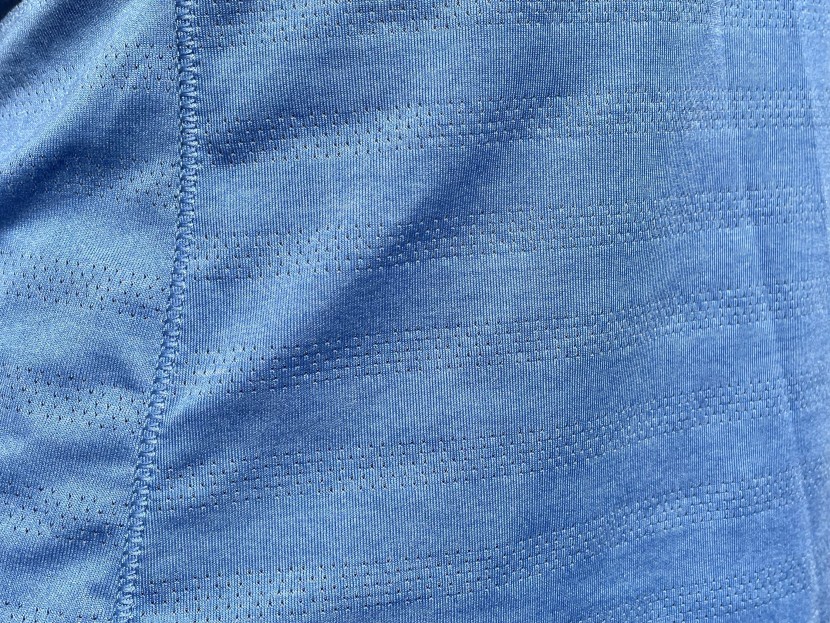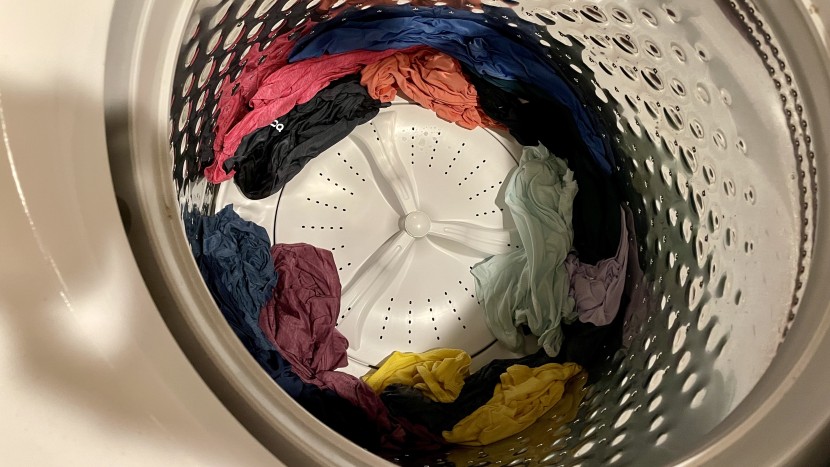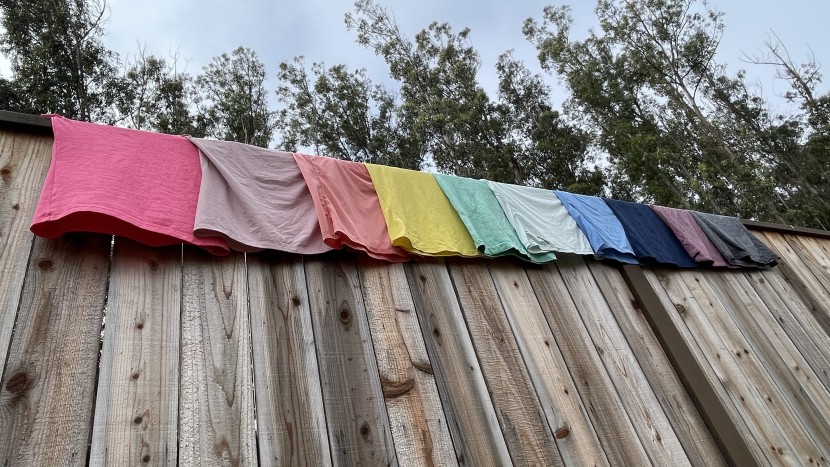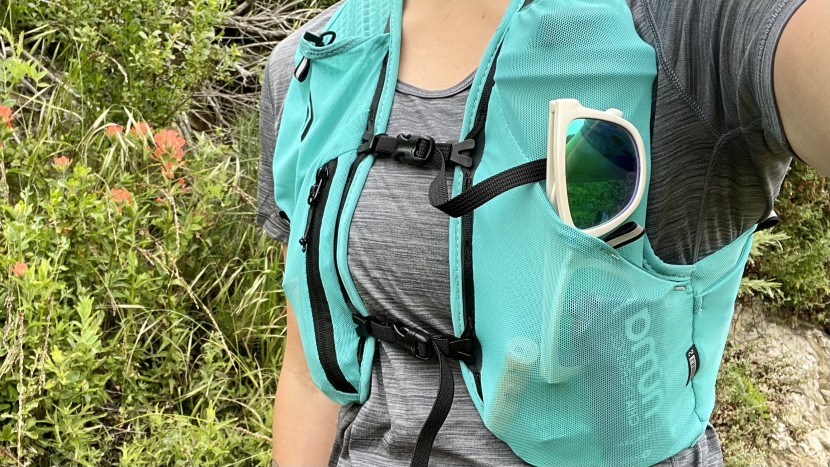Once we narrowed down which shirts our review would be focusing on this season, it was time to test. Our goal was to wear the shirts in as many different scenarios as possible — long runs, short runs, desert heat, cool mountain temps, underneath running vests, etc., to make sure our judgments were as well-rounded as possible. This time around, we assessed some of the metrics in steamy spin classes to further nitpick details such as breathability and moisture-wicking prowess. We had already determined the qualities that we think are most important in a running tee and kept those in mind with each mile. Most testing was done while running, but we also did some more controlled tests in order to get the most accurate shirt-to-shirt info. Read on as we explain the details of each metric and how we tested for it.
Comfort
Testing for comfort involved getting really nitpicky about how each fabric felt, the sleeve lengths, hem lengths, seam type and location, range of motion, and overall fit. After each run, we took notes about what we had noticed and also referenced customer reviews for each product to see if other wearers had the same thoughts. We also made sure to wear the shirts with other pieces of running gear, such as windbreakers and hydration vests, to make sure they would work well in your full kit.
Breathability
Breathability can feel like an abstract metric to accurately pin down. We tried to make sure we ran with each shirt in a similar amount of heat and sun exposure, and this was another case where mid-run voice-dictating note-taking was very helpful for compiling our thoughts. If we spent the whole run wishing we were in just a sports bra, the shirt did not score well in this metric.
While not an exact correlation to breathability, we did weigh each shirt and compared our numbers to any weights listed by the manufacturers. Lastly, we looked at the physical characteristics of the fabrics — some use pinprick-sized holes in a consistent pattern across the whole shirt, while others have mesh paneling in strategic locations Others still have breathable mesh intertwined with their polyester bodies for added breeziness.
Drying Speed
To determine the drying speed of the shirts, we conducted an at-home science extravaganza. We put each shirt through a cycle in our washing machine and post-spin cycle, felt how much dampness each shirt retained, and then threw them all in the dryer for a quick 5-minute tumble. After each 5-minute interval, we removed the shirts from the dryer to determine which dried the quickest.
To confirm that our initial findings were accurate, we then rewashed all of the shirts and put them through another spin cycle. Immediately following the completion of this cycle, we hang-dried all of the shirts to see how quickly they shed their moisture without the help of a dryer. We were pleased to discover that our original drying time rankings were further confirmed by this test.
Features and Versatility
Assessing features meant first checking the manufacturer claims for each product, and then comparing those with our own observations. While we couldn't specifically test a shirt's UPF, we could test how much it weighs, how packable it is, how reflective any decals are, etc.
A high versatility score means that we think a shirt performs well for numerous activities, in many different weather conditions, and in conjunction with other gear. Not every aspect of versatility could be fully tested this season since we were in the midst of shelter-in-place orders, so we based our judgments on both past experiences with specific fabrics and brands along with as much testing as we were able to do.

